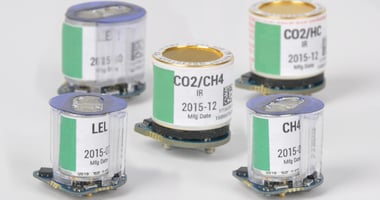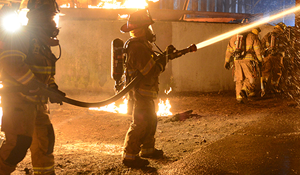What is an Ultra-Low Power IR LEL Sensor?
An ultra-low power infrared (ULP IR) LEL sensor, as opposed to a catalytic bead, works based upon the absorption of infrared radiation at specific wavelengths as it passes through a volume of gas. While both catalytic bead and IR LEL sensors are viable solutions for combustible gasses, there are key differences that can make or break either sensor as a solution to fit your specific gas detection application.
Read on to learn more about choosing between a catalytic bead LEL sensor and an IR LEL sensor.
Benefits of Using an IR LEL Sensor
No Oxygen Required
Due to the nature of an IR LEL sensor, oxygen is not required for the sensor to detect combustible gases, making the IR LEL sensor ideal for sampling in inert environments such as confined spaces or lines that are being purged. Since there is no oxygen required, you can sample without additional equipment like dilution tubes. Instead, simply attach the required length of tubing to your aspirated gas monitor and you can begin sampling.
Great for High-Gas Environments and Immune to Poisons and Inhibitors
An IR LEL sensor is not damaged by high gas concentrations, so you can also continue to sample in high LEL environments for prolonged periods of time without damaging the IR LEL sensor. An IR LEL sensor also is not susceptible to poisons and inhibitors that can damage a catalytic bead LEL sensor. Many poisons and inhibitors are products and gases commonly found in environments where gas detection is needed, so you can significantly increase the life of your sensor by choosing an IR LEL sensor.
Extend Battery Life
An IR LEL sensor also takes much less power than a standard catalytic bead sensor, allowing for longer monitor run time. For example, an aspirated Ventis Pro5 using a catalytic bead LEL sensor can run for 18 hours, while the same configuration with an ULP IR LEL sensor in place of the catalytic bead can run for 32 hours.

When to Avoid Using an IR LEL Sensor
Although an IR LEL sensor has several benefits over a standard catalytic bead LEL sensor, they do have some drawbacks that may not make them suitable for your application.
The main drawback is that an IR LEL sensor is blind to some gases, the most common being hydrogen (H2) and acetylene (C2H2). An IR LEL sensor will not detect these gases, so if you have the potential for either to be present in your application, you should not use an IR LEL sensor.
An IR LEL sensor can also display false readings due to humidity, especially when moving from cold to warm atmospheres. While these false readings can be a nuisance, they are self-correcting. If readings appear when your monitor moves from a cold to warm and humid atmosphere, the sensor will stabilize on its own.
Example Use Cases for an IR LEL Sensor
Using an IE LEL Sensor to Unlock Connected VOC Monitoring
Perhaps the most exciting use of an ULP IR LEL sensor is in the Ventis Pro5 Multi-Gas Monitor with a PID (photo-ionization detector) sensor. With the new ULP IR LEL sensor, the Ventis Pro5 can now be used with a PID sensor to detect volatile organic compounds (VOCs).
Equipped with the most advanced and accurate PID sensing technology, the Ventis Pro5 is now the most compact and reliable, connected five-gas personal monitor available to reliably detect VOCs.
Whether you’re gearing up for confined space entries or preparing your emergency response efforts, the new PID sensor for Ventis Pro5 allows users to detect VOCs with the connected, wearable personal gas monitor they’re already using, reducing the need for additional bulky handheld monitors. By limiting the need for supplementary devices, the Ventis Pro5 with PID sensor can help reduce fleet sizes and ease maintenance pains. Connectivity to our iNet platform allows for live monitoring, data management, and end-to-end maintenance services that provides safety managers and industrial hygienists a complete package for VOC monitoring.
Learn more about using the Ventis Pro5 to detect VOCs.
Using Infrared LEL Sensors in the Radius BZ1® Area Monitor
While both an IR and catalytic bead LEL sensor are viable solutions for combustible gases, there are key differences that can make or break either sensor as a solution to fit your specific application with the Radius BZ1. Learn more about using IR LEL sensors with a Radius BZ1® Area Monitor.




